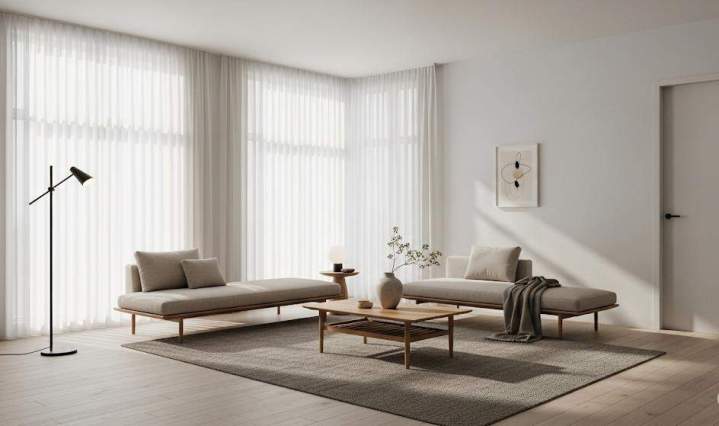Crafting Beautiful Interior Design: Tips for Every Room
Interiors Admin / October 12, 2025

The Living Room: Where Comfort Meets Style
Choosing the Right Color Palette
To set the right mood in your living room, start with a color palette that reflects your personal style. Soft, neutral tones can create a calming atmosphere, while bolder colors can add energy and vibrancy. Consider the natural light in the room; lighter colors will open up the space, whereas darker hues can make it feel cozy and intimate.
Furniture Arrangement for Functionality
The arrangement of furniture is critical in a living room. Aim for a layout that promotes conversation and interaction. Position seating in a way that encourages dialogue—this might mean angling chairs towards each other or creating a circular formation. Don’t forget to leave enough space for movement; a well-structured flow will make the room feel more inviting.
Adding Personal Touches
Incorporate personal elements through art, photographs, or decorative items. These accents can tell your story and make the space feel uniquely yours. Consider using a mix of textures such as a plush rug, soft throws, and various materials for pillows to add depth and warmth.
The Kitchen: A Blend of Functionality and Aesthetics
Optimizing Layout and Workflow
The kitchen is often referred to as the workhorse of the home. When designing this space, focus on the kitchen work triangle—the relationship between the sink, stove, and refrigerator. An efficient layout minimizes movement and maximizes productivity. Open shelving can also enhance accessibility while providing an opportunity to display beautiful dishware.
Choosing Durable Materials
Given the demands of a kitchen, materials must be both stylish and durable. Opt for countertops that withstand heat and stains, such as quartz or granite. For cabinetry, consider finishes that are easy to clean and maintain. Stainless steel appliances not only add a modern touch but also offer longevity and resistance to wear.
Lighting That Enhances Functionality
Lighting plays a pivotal role in a kitchen. Combine ambient lighting with task lighting to ensure functionality. Under-cabinet lights can illuminate work surfaces, while pendant lights over an island can serve as a focal point. Choose fixtures that reflect your style, whether it be industrial, modern, or classic.
The Bedroom: A Sanctuary for Relaxation
Creating a Calming Color Scheme
For a restful atmosphere, select soothing colors for the bedroom. Soft blues, greens, and muted grays can promote relaxation. Consider incorporating an accent wall in a deeper shade to create visual interest without overwhelming the senses.
Furniture Selection for Comfort
When choosing furniture, prioritize comfort alongside aesthetics. A quality mattress is crucial for a good night’s sleep, while soft bedding can enhance the overall cozy feel. Nightstands and dressers should be functional yet stylish, complementing the overall design theme.
Incorporating Soft Textiles
Textiles can dramatically change the feel of a room. Layering different fabrics—like a chunky knit throw over a smooth duvet—adds warmth and depth. Curtains should be chosen not only for their design but also for their ability to block light and provide privacy.
The Bathroom: A Personal Oasis
Emphasizing Clean Lines and Functionality
In the bathroom, functionality is key. Opt for a layout that maximizes space, especially in smaller areas. Floating vanities can create an illusion of more space while providing storage. Choose fixtures that have clean lines and modern finishes to keep the space feeling fresh.
Selecting the Right Accessories
Accessories can transform a bathroom from utilitarian to luxurious. Think about incorporating elements such as decorative soap dispensers, stylish towels, and potted plants. These details can create a spa-like ambiance, making your bathroom a personal retreat.
Lighting and Mirrors
Good lighting is essential in a bathroom. Layered lighting, including overhead fixtures and sconces, can create a well-lit space suited for grooming. Mirrors also play a crucial role; a large mirror can visually expand the space and add elegance.
Creating cohesive, beautiful interiors requires balancing personal style with practical functionality across every space in your home. A professional interior designer can help you achieve this harmony while avoiding costly mistakes and ensuring a polished, coordinated result.